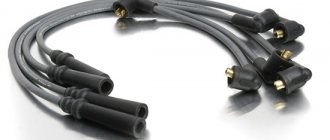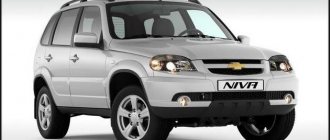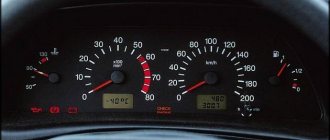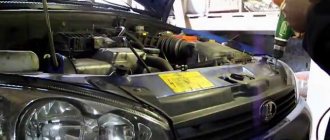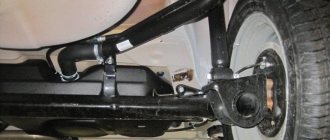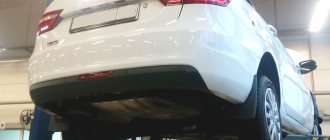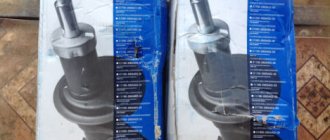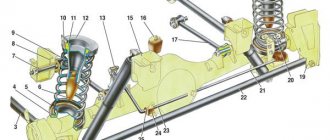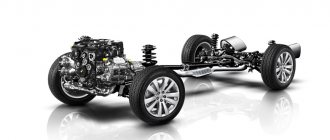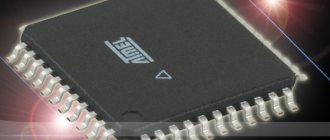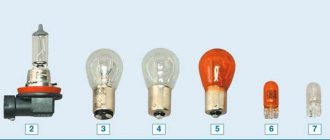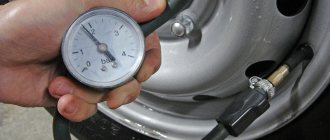Why does a wheel make a sound when turning?
When turning the steering wheel, a knock in the wheel area on a Lada Grant, as well as other extraneous sounds that are not characteristic of a working car, are usually caused by several reasons. Let's take a closer look at them.
Incorrect alignment
If the toe is set incorrectly, the car pulls to the side when driving. The greater the deviation from the norm, the louder the tire squeak both when turning and during straight-line movement. It occurs due to the clinging of the fender liner or body to the wheel.
Incorrect camber
This is the angle of mounting the wheels relative to the road surface. The ideal option on Grant is a perpendicular installation. If the camber is negative, this will lead to increased wear on the inner edge of the tire during straight-line movement or instability during maneuvers.
Wrong castor
Castor is a longitudinally inclined axial rotation angle. In other words, a line drawn through both points of fixation of the rack. If, when viewed from the side, the steering axis of the wheel is turned toward the rear of the car, we are talking about positive castor. The more the castor is shifted here, the more stable the Grant will behave on the road, but this will increase the force on the steering wheel when turning. The car can even lift up, creating a completely unwanted lateral roll. Naturally, such a moment is accompanied by a creak.
Worn outer CV joint
If you hear a crunching sound in the area of the Grant's wheels when you turn the steering wheel, it could be a grenade. You can check this by placing the car on a level surface and turning the wheels to one side until they stop. Then you need to try to move off smoothly. A crunch when turning the steering wheel will indicate damage to the outer joint.
The locker (fender liner) is not secured or damaged
Lockers, of course, isolate the wheel arches and reduce noise in the cabin. If the installation of fender liners at the rear of the Granta is carried out thoroughly, with the car being raised and additional fasteners used, then in the front part the situation is different. There is more space here; the parts fit into the grooves without additional fasteners.
Replacing wheel parts
Often they weaken and rub against the wheel, which causes the wheel to squeak when turning the Granta.
Support bearing damaged
The part is located between the support and the upper spring cup. To check the support bearing, you need to put your hand on the coil of the front shock absorber. Then ask a friend to turn the steering wheel left and right. A metal clang and a kick in the hand will indicate damage to the element.
Steering rod is deformed
The deformation is determined after a visual inspection - the shape of the rod, which clings to any part of the body, changes. This causes a knocking sound in the wheel area on the Lada Grant when turning the steering wheel.
Ball joint worn out
If the plastic bushing of the ball joint is worn out, then play in the support pin appears, which is why the sound of dull impacts appears when driving over small irregularities. After all, the lower suspension arm moves relative to the steering knuckle, and then approaches it, making a knock upon impact.
One of the suspension nuts is not tightened
When driving on uneven roads, as well as due to improper tightening, the nuts become loose, which is why a knock is heard in the suspension when cornering and when driving over uneven surfaces. This is a very dangerous symptom, because if the nut is completely unscrewed, the suspension will fail and the car will lose control.
Worn rubber seals and silent blocks
Rubber products provide a limited range of movement of suspension parts relative to each other without collision. However, when they are worn out, the range of movement of the parts increases and they sometimes collide with each other, which leads to knocking noises.
Also, worn-out cushions and seals cause squeaks during turns, sudden acceleration or braking.
The body is deformed
Body deformation disrupts the operation of the entire suspension. Because of this, the caster, camber and toe settings are lost, which leads to elements coming into contact with each other. As a result, they begin to creak or knock. In addition, some of the parts (silent blocks and other rubber bands) become warped, and they also begin to make noise when moving. And if the body is severely deformed, the wheel itself often catches on the body or suspension parts, which also leads to squeaks and knocks.
